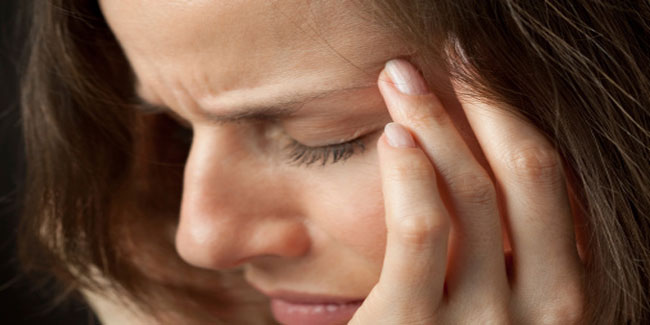
Everyone gets a headache at some point. Headaches (throbbing pain in your head) come in many forms and there can be many reasons behind aching temples, ranging from poor nutrition to stress.

Reasons for Headaches
Table of Content:-
Health experts have classified headaches into two categories – primary and secondary. Primary headaches are the ones that don’t have any association with an underlying medical condition. Secondary headaches are the ones that occur as complications for infections, fever, dental conditions and other medical reasons.
Primary headaches
Migraine is one of the most common forms of headache. It is caused because of the reduced blood flow to various areas of the cerebral cortex. Tension headaches are primary headaches that are caused by muscular strains in the head and neck and/or emotional stress. Eye strain (poor vision) is another reason behind tension headaches. Cluster headaches are headaches that occur repeatedly or over a period of weeks or even months. These usually occur on one side of the head and are centered around the eye. The change in blood flow is the most common cause of cluster headaches.

Secondary headaches
Secondary headaches occur as a result of some other problem or medical condition. Once you recover from the condition, you get rid of the secondary headaches.
What to do for headaches?
- Ice pack: Applying ice packs to your temples and forehead can help ease your headache. Cold compress numbs the pain and lowers the temperature to shrink blood vessels that are enlarged and stimulate pumping blood at an increased rate.
- Heat therapy: Applying heat to the back of your neck can alleviate a tension headache as it helps loosen tense muscles. You can also take a hot shower or use a hot water bottle to lessen the headache.
- Medication: Most headaches (other than migraine) can be treated with over-the-counter medications such as aspirin.
- Healthy lifestyle: Sometime the reason for headaches is poor lifestyle habits such as poor diet, not enough sleep, inactivity and stress. Make a change by eating more fresh foods and making time for exercise, relaxation and rejuvenation.
When you have been experiencing chronic or frequent headache, see your physician. It may be a symptom of an underlying medical condition. For women, checking hormonal imbalances may be helpful.
(Image source:Getty)
Read more articles on Pain.
How we keep this article up to date:
We work with experts and keep a close eye on the latest in health and wellness. Whenever there is a new research or helpful information, we update our articles with accurate and useful advice.
Current Version